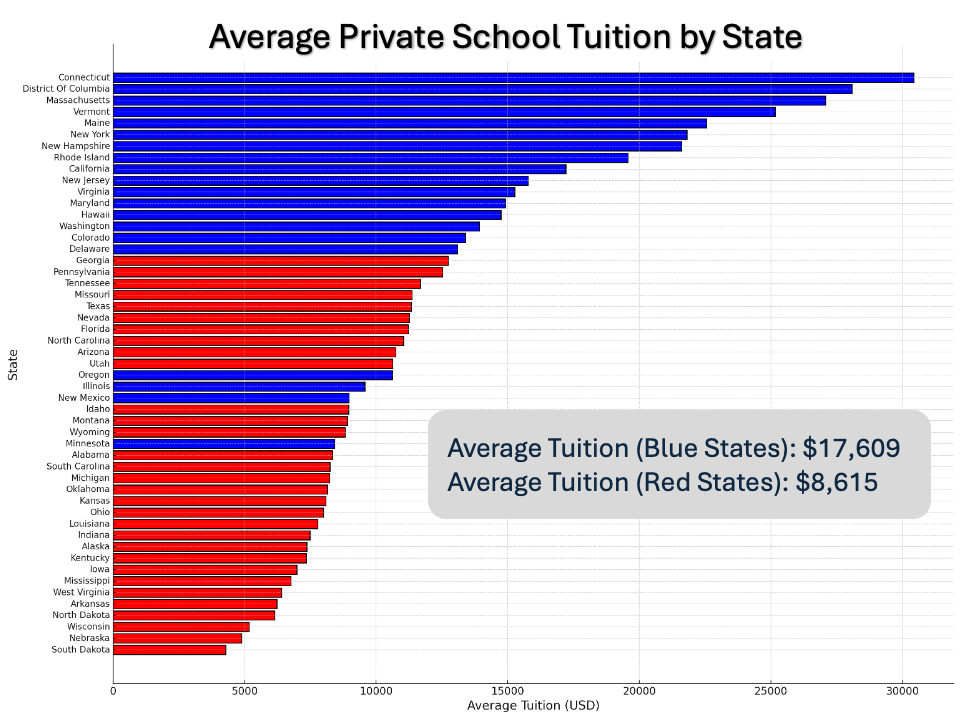Write your brilliant content
Author: Mike Bronder
-
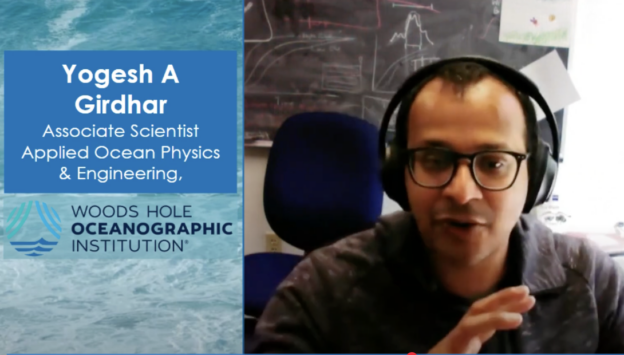
Exploring the Ocean’s Final Frontier: How Kids Are Building Robots for the Twilight Zone
Real-World Science in Action—And in the Classroom
“We know more about the surface of Mars than we do about the depths of our own oceans.” Oceanographers repeat this often, and for good reason. The Ocean Twilight Zone (OTZ)—a vast, dimly lit layer between 200 and 1000 meters deep—remains one of the least understood parts of our planet. It plays a key role in marine life, climate regulation, and carbon storage. But studying a place so remote and inhospitable is no small challenge.
That’s where robotics comes in. Thanks to Scoutlier’s OTZ Project-Based Learning Program, students aren’t just learning about ocean exploration—they’re building the tools to do it themselves, engaging in hands-on, inquiry-driven experiences that mirror the real-world challenges scientists face.
Yogesh Girdhar, a scientist at Woods Hole Oceanographic Institution, puts it simply: “If you’re succeeding all the time, that means you’re not really doing anything interesting.” His work with robotics and AI is focused on making exploration in the Twilight Zone not just possible, but more effective. That same philosophy—pushing boundaries and embracing discovery—is now being passed down to the next generation through project-based learning.
“The OTZ is home to species that migrate vertically every night in the largest movement of biomass on Earth,” says Girdhar. “It also serves as a major carbon sink, pulling carbon from the atmosphere and trapping it in the deep sea. But because it’s so difficult to access, scientists rely on technology—especially autonomous robotics—to gather data and uncover its secrets.”
Traditional deep-sea exploration depends on expensive, remotely operated vehicles. But autonomous robots with AI-driven decision-making allow for new kinds of discovery. Instead of following a rigid script, they react to their surroundings, adjusting their movements and objectives based on what they encounter. They are, in a sense, learning about the ocean as they explore it.
Scoutlier’s Ocean Twilight Zone Project-Based Learning Program brings this technology to students. Through hands-on projects, young explorers:
- Design and build their own underwater robots.
- Program adaptive AI that allows their robots to explore and respond to new data.
- Analyze real-world findings just like marine scientists.
- Collaborate on STEM challenges that mirror the work of professional oceanographers.
This isn’t a classroom experiment—it’s a model of project-based learning that prepares students to engage with real-world scientific inquiry. The OTZ program is an excellent fit for K-12 schools looking to integrate STEM into their curriculum, whether as part of a science class, an enrichment program, or a summer camp. It equips students with practical problem-solving skills and leadership opportunities, helping them develop confidence in tackling complex challenges.
By combining robotics, AI, and ocean science, Scoutlier’s program helps students move beyond textbooks and into active exploration. They don’t just study oceanography; they contribute to it. The discoveries of tomorrow might come from students experimenting today.
The Ocean Twilight Zone remains one of Earth’s last frontiers. With the right tools and the right minds, we can bring its mysteries to light. Whether you’re an educator, a student, or just someone fascinated by the deep sea, now is the time to be part of the next wave of discovery.
Learn more about the OTZ program and how your students can participate here!
Scoutlier, in partnership with ONR and Woods Hole Oceanographic Institution, makes it possible to run programs like OTZ at scale, ensuring that students and educators have access to the tools and guidance they need. By providing a structured, easy-to-use platform, Scoutlier helps teachers integrate real-world projects into their curriculum without being overwhelmed by logistics. Data collection, collaboration, and progress tracking are built into the platform, making it easier for students to focus on discovery and innovation. With Scoutlier, schools can bring high-level STEM experiences to more students, equipping them with the skills and confidence to tackle complex challenges beyond the classroom. The program also supports K-12 educators and school leaders in fostering student engagement, teamwork, and leadership—critical skills for the next generation of scientists and engineers.
-

Exploring the Ocean’s Final Frontier: How Kids Are Building Robots for the Twilight Zone
Real-World Science in Action—And in the Classroom
“We know more about the surface of Mars than we do about the depths of our own oceans.” Oceanographers repeat this often, and for good reason. The Ocean Twilight Zone (OTZ)—a vast, dimly lit layer between 200 and 1000 meters deep—remains one of the least understood parts of our planet. It plays a key role in marine life, climate regulation, and carbon storage. But studying a place so remote and inhospitable is no small challenge.
That’s where robotics comes in. Thanks to Scoutlier’s OTZ Project-Based Learning Program, students aren’t just learning about ocean exploration—they’re building the tools to do it themselves, engaging in hands-on, inquiry-driven experiences that mirror the real-world challenges scientists face.
Yogesh Girdhar, a scientist at Woods Hole Oceanographic Institution, puts it simply: “If you’re succeeding all the time, that means you’re not really doing anything interesting.” His work with robotics and AI is focused on making exploration in the Twilight Zone not just possible, but more effective. That same philosophy—pushing boundaries and embracing discovery—is now being passed down to the next generation through project-based learning.
“The OTZ is home to species that migrate vertically every night in the largest movement of biomass on Earth,” says Girdhar. “It also serves as a major carbon sink, pulling carbon from the atmosphere and trapping it in the deep sea. But because it’s so difficult to access, scientists rely on technology—especially autonomous robotics—to gather data and uncover its secrets.”
Traditional deep-sea exploration depends on expensive, remotely operated vehicles. But autonomous robots with AI-driven decision-making allow for new kinds of discovery. Instead of following a rigid script, they react to their surroundings, adjusting their movements and objectives based on what they encounter. They are, in a sense, learning about the ocean as they explore it.
Scoutlier’s Ocean Twilight Zone Project-Based Learning Program brings this technology to students. Through hands-on projects, young explorers:
- Design and build their own underwater robots.
- Program adaptive AI that allows their robots to explore and respond to new data.
- Analyze real-world findings just like marine scientists.
- Collaborate on STEM challenges that mirror the work of professional oceanographers.
This isn’t a classroom experiment—it’s a model of project-based learning that prepares students to engage with real-world scientific inquiry. The OTZ program is an excellent fit for K-12 schools looking to integrate STEM into their curriculum, whether as part of a science class, an enrichment program, or a summer camp. It equips students with practical problem-solving skills and leadership opportunities, helping them develop confidence in tackling complex challenges.
By combining robotics, AI, and ocean science, Scoutlier’s program helps students move beyond textbooks and into active exploration. They don’t just study oceanography; they contribute to it. The discoveries of tomorrow might come from students experimenting today.
The Ocean Twilight Zone remains one of Earth’s last frontiers. With the right tools and the right minds, we can bring its mysteries to light. Whether you’re an educator, a student, or just someone fascinated by the deep sea, now is the time to be part of the next wave of discovery.
Learn more about the OTZ program and how your students can participate here!
Scoutlier, in partnership with ONR and Woods Hole Oceanographic Institution, makes it possible to run programs like OTZ at scale, ensuring that students and educators have access to the tools and guidance they need. By providing a structured, easy-to-use platform, Scoutlier helps teachers integrate real-world projects into their curriculum without being overwhelmed by logistics. Data collection, collaboration, and progress tracking are built into the platform, making it easier for students to focus on discovery and innovation. With Scoutlier, schools can bring high-level STEM experiences to more students, equipping them with the skills and confidence to tackle complex challenges beyond the classroom. The program also supports K-12 educators and school leaders in fostering student engagement, teamwork, and leadership—critical skills for the next generation of scientists and engineers.
-
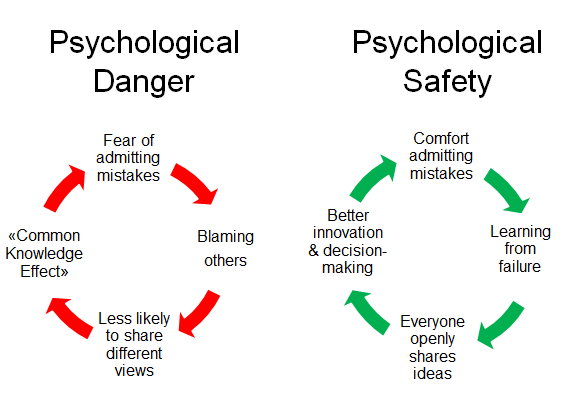
Growth Mindset Isn’t Just for Safe Spaces: Leadership Through Failure
As a leader, an employee, a friend, a spouse, a parent, and a son, I’ve made mistakes. Big ones. Painful ones. And one of the earliest lessons I learned is this: contrition, recognition, and ownership of mistakes are the only viable responses.
Owning up doesn’t guarantee forgiveness. It doesn’t erase the mistake or immediately make things right. But it does allow lessons to be learned and rebuilding to begin—sooner rather than later.
We often talk about “growth mindsets” and creating “safe places to fail.” Those are valuable concepts, but in my experience, those environments are often more about practice than real-world application. What matters most isn’t the specific “thing” we learn to do better—whether that’s teaching differently, handling a call more skillfully, or remembering to carry the 9 next time. The real takeaway is the habit we build: the competency of admitting failure, learning from it, and moving forward.
In the real world, the stakes are higher, and the consequences can feel sharper. It’s not always a safe place to fail. But that’s the point: leadership, self-assurance, and integrity mean using your misstep as a springboard for growth—not just for yourself but for everyone around you.
This reflection comes to mind because I just read a public apology from an organization’s board of directors for a major misstep that happened 90 days ago. Ninety days. This was their first acknowledgment. And it was too late .
Had they addressed the situation right away—acknowledged it and taken ownership—they could have recovered. It was entirely possible. Instead, it festered. Gossip spread. The issue ended up in the newspaper. Now, this apology, which might have worked 89 days ago, is just fuel for more frustration.
And yet, I’m still grateful for it. I wish the organization well. They’ll likely face repercussions for both the original misstep and the “too little, too late” response. But their public apology serves as a powerful reminder to me: the importance of practicing a growth mindset, even when it feels unsafe.
Leadership isn’t about perfection. It’s about how we navigate our imperfections—and how we use them to move forward.
-
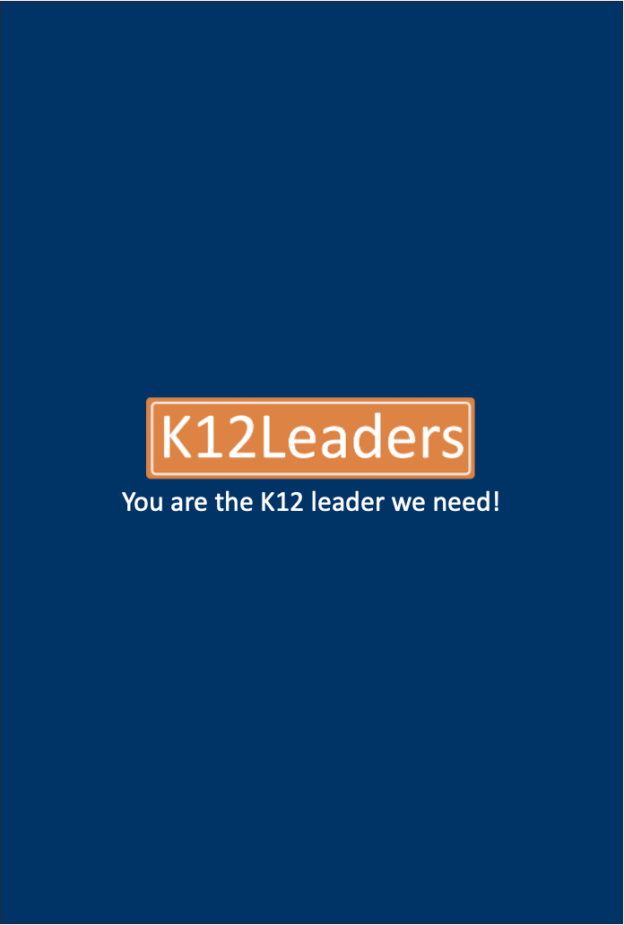
K12Leaders: Tailored Community Solutions for K-12 Education
In the crowded world of community platforms, educators and organizations within the K-12 ecosystem deserve a space purpose-built for their needs. While many platforms promise connection and collaboration, K12Leaders delivers with a unique blend of tools, engagement strategies, and dedicated support to drive meaningful results.
Unlike generic platforms, K12Leaders is designed exclusively for K-12 education. We’re not just a platform; we’re a partner. Here’s how we compare to popular community platforms:
What Makes K12Leaders Unique?
1. Purpose-Built for K-12 Education
Unlike platforms that try to serve all industries, K12Leaders is tailored exclusively for educators and organizations in the K-12 space. This focus ensures features, tools, and content are relevant and impactful.
2. Community Managers to Drive Engagement
We’re not just offering a platform; we’re offering partnership. K12Leaders provides community managers to help partner organizations with day-to-day engagement, ensuring active and thriving communities.
3. Amplifying Your Voice in the K-12 Ecosystem
Through targeted marketing and promotion, we ensure your community, courses, or events are seen by the right audience. Our network of 70,000 educators guarantees your message reaches those who matter.
4. Integrated Professional Development and Credentialing
Host, market, and deliver courses with built-in tools for e-commerce, credentialing, and cohort-building. K12Leaders also provides a Credential Locker aligned with national standards, adding value beyond just community engagement.
5. Events Made Easy
From registration and session management to post-event networking, K12Leaders simplifies the process of hosting and managing educational events, ensuring attendees remain engaged long after the event ends.
Why K12Leaders Stands Out
Feature K12Leaders LinkedIn Facebook Mighty Networks Slack Circle Tailored for K-12 ✅ Exclusively focused on educators and organizations ❌
General professional network❌ Distracting general audience ❌
Broad, customizable focus❌ Workplace-oriented ❌
Broad customizable focusMarketing & Promotion ✅
Targeted promotion to the K-12 ecosystem❌
Limited to paid ads❌ Algorithm-driven visibility ❌
No ecosystem-wide marketing❌
No built-in promotion❌
No ecosystem-wide marketingCommunity Engagement Support ✅
Dedicated community managers available❌
Self-managed❌
Self-managed❌
Self-managed❌
Self-managed❌
Self-managedSafe, Secure Environment ✅
Strict moderation & no harassment❌
Open to spam❌
Privacy and safety issues✅
Controlled access✅ Controlled access ✅
Controlled accessProfessional Development Integration ✅
Built-in credentialing & course delivery❌
None❌
None❌
None❌
None❌
NoneEvent Management ✅
Full support: registration, calendars, communities❌
Minimal tools❌
Not designed for events✅
Limited❌
Limited❌
LimitedExample Use Cases
For Associations and Conferences:
Facilitate year-round engagement and provide attendees with ongoing networking and resource-sharing opportunities.
For Schools and Districts:
Create secure, private spaces for staff collaboration, training, and communication, with the ability to assess sentiment and share resources.
For Professional Development Providers:
Build courses, issue credentials, and track adoption and success, increasing repeat engagement.
Join the Movement
K12Leaders isn’t just a platform– We’re a community for communities. With our tailored tools, marketing expertise, and engagement support, we make it possible for educators and organizations to connect, collaborate, and grow, all while advancing the mission of K-12 education.
Let’s build something extraordinary together. Get started with K12Leaders today!
-

Like It or Not, Choice is Coming…
The debate over school choice doesn’t feel much like a debate anymore, especially with Linda McMahon poised to step in as the next Secretary of Education. Trump’s proposal to expand school choice underscores a longstanding conservative goal: giving parents more control over their children’s education through mechanisms like vouchers or tax credits. Whether you support or oppose these ideas, one thing is clear—change is coming. The question is, how will you lead through it?
School choice remains a lightning rod issue. It has far-reaching implications for equity, parents’ rights, and even the role of the public school board, which has to date been the driver of local educational priorities. At the heart of the discussion are two key mechanisms:
- Vouchers, which allow families to redirect public funds to private schools.
- Tax credits, which incentivize private donations to support school choice initiatives.
While both aim to put control more directly in parents’ hands, they take different approaches to reshaping how education is funded—and who benefits.
In red states, where these proposals are likely to find strong support, the shift could lead to significant changes in federal education funding. These states currently benefit more from federal dollars, receiving $1.30 for every $1.00 paid in federal taxes. But with school choice policies, those same states may experience larger reductions in public school funding—up to 14% in some cases. This would directly impact programs that support disadvantaged students. Meanwhile, parents in these states would gain greater access to discretionary funds for private schooling through vouchers or tax credits.
The scenario for blue states is slightly different, with public schools there at risk of losing up to 11% in federal funding and parents receiving proportionally fewer credits or voucher dollars. Interestingly, private school tuition in blue states is significantly higher than in red states, with the implication that fewer credit/voucher dollars will have a significantly less value than in red states.
For public schools everywhere, this points to a more competitive landscape with fewer resources, even as families gain new opportunities for alternative education.
Key Questions for Educational Leaders
For Public School Leaders: How will you adapt to potential funding cuts while maintaining equitable access to student services, nutrition programs, extracurricular activities, and athletics?
For Private School Leaders: If these policies bring an enrollment surge, how will you scale operations, manage budgets, and recruit staff to meet the needs of a potentially more diverse student population?
For All Education Leaders: How are you engaging your community—parents, teachers, and other stakeholders—to build consensus and prepare for changes in funding, enrollment, and equity?
The Time to Lead Is Now.
Navigating these shifts won’t be easy. Whether you see school choice as a challenge or an opportunity, visioning and planning are essential. Engage your community. Reassess your funding models. Prepare for changes in student demographics. The choices we make today will shape the future of K-12 education tomorrow.
Lots of change is on the horizon—and it’s getting closer every day.
#k12leadership #schoolchoice #vouchers #lindamcmahon
Posted by: Mike Bronder
-

Quality Training for Substitute Teachers: How Addressing Quality Can Enhance Staffing Pools
The role of substitute teachers has grown increasingly significant as schools work to provide quality instruction with the growing frequency of teacher absences. Substitute teachers were once viewed as occasional stand-ins, but today, they are essential for educational continuity. Schools face a dual challenge: ensuring there are enough substitutes available, while ensuring students still receive quality instruction during these periods. Interestingly, there may be ways that the push for quality actually increases the staffing pool.
As a point of reference, before the Pandemic, students spent around 10% of instructional time with substitutes—a figure that has since doubled to nearly 20% as districts grapple with persistent teacher shortages The Journalist’s Resource.
This shift raises a vital question: Are today’s substitute teachers adequately prepared to meet classroom demands?
School districts face ongoing challenges in filling substitute positions. By late 2023, 77% of district leaders reported “considerable” difficulty in finding substitutes, and over 93% experienced at least some staffing shortage National Center for Education Statistics.
Many districts have implemented temporary solutions, such as increasing pay, lowering qualification requirements, and recruiting college students and parents K-12 Dive. While these measures help keep classrooms staffed, they often do little to ensure students receive quality instruction while their regular teacher is out.
A well-prepared substitute teacher plays a critical role in maintaining a stable and engaging learning environment. It’s no surprise that poorly managed classrooms often lead to disengaged students, behavioral issues, and lost instructional time. In contrast, capable substitutes uphold lesson continuity, engage students, and foster a positive classroom atmosphere The Thomas B. Fordham Institute.
Unfortunately, substitutes generally lack access to professional development opportunities available to full-time educators, which impacts their effectiveness. While 80% of large districts have raised substitute pay since early 2022, many districts are now recognizing that structured training and certification are essential to improving substitute teaching quality Red Rover.
One effective approach to improving substitute teaching quality is certification. Programs like the The Fundamentals of Substitute Teaching K-12—a certification course offered by TransendED Learning through K12Leaders—equip substitutes with essential skills and strategies for effective classroom management and engagement. Key training areas include:
- Classroom management techniques
- Student engagement strategies
- Adapting to diverse educational environments
“In my years working across various districts, the need for skilled and dependable substitute teachers has been a constant challenge. I’ve seen first-hand how the lack of training and preparedness can impact not just the classroom environment, but student learning as a whole.” say’s Dr. Dawson. “This online pathway for subs introduces essential classroom management skills, engagement strategies, and a clear framework to succeed from day one. This program should both address the staffing gap and raise the bar for what we expect from our subs.”
This certification provides substitutes with comprehensive preparation, building both their skills and confidence, and also coaches them through creating a “survival kit” of resources to help them be ready for any challenges they face in the classroom.
Certification also helps address one of the core issues substitutes face: assignment inconsistency. Districts are more likely to rely on certified substitutes, knowing they meet quality standards required for successful classroom management and instruction. This consistency benefits both substitutes, who gain regular assignments, and students, who receive dependable, quality instruction K-12 Dive.
Certification and training programs can increase a district’s substitute pool by empowering more individuals to consider these roles. Many potential substitutes may be intimidated and hesitate due to a lack of confidence or preparation. With formal training, they gain the knowledge and skills necessary to succeed, making them more likely to enter the classroom as substitutes. Not only does this expand the substitute pool, but it also raises the quality of instruction, as certified substitutes are better equipped to manage classrooms effectively Red Rover.
Investing in substitute teacher certification isn’t merely a temporary fix for staffing shortages; it’s a sustainable strategy for enhancing instructional quality. Certified substitutes do more than just fill a gap. They engage students, follow lesson plans closely, and contribute to a positive learning environment. Districts that prioritize certification set a high standard for substitute teaching, recognizing the long-term value of well-prepared substitutes.
With federal pandemic relief funds winding down, districts increasingly need sustainable solutions for staffing challenges. Certification provides one such solution, transforming substitutes from temporary classroom managers to skilled educators ready to teach whenever needed National Center for Education Statistics.
By reflecting on these questions, district leaders can make informed decisions to enhance substitute teaching programs. Programs like the “Professional Pathway” offer a structured way to improve substitute quality and positively impact student outcomes K-12 Dive.
The demand for substitute teachers remains steady, and the need for quality instruction—whether from a permanent teacher or a substitute—remains essential. Investing in certification helps ensure that every classroom has a teacher prepared to lead.
Districts prioritizing higher standards for substitute teaching should consider easy access certification programs like Dawson’s The Fundamentals of Substitute Teaching K-12 to support both their educators and students. Quality substitutes make a lasting, positive impact, contributing to the stability and effectiveness of our educational systems.
Essential Questions for School Leaders
To assess their substitute staffing and training needs, district leaders can consider the following questions:
- What percentage of instructional time in our district is led by substitute teachers?
- How does the quality of substitute-led instruction compare to that of permanent staff?
- What training and development opportunities are available to substitutes?
- Are substitutes included in our professional development programs, and if not, why?
- What steps ensure that substitutes have the necessary classroom management skills?
- How can we support substitutes in becoming consistent and reliable members of our educational team?
- What long-term benefits could substitute certification bring to our district?
-
RIDE Funded- CyberConnectED Workshop

Register now to for RIDE funded Cyberscurity Professional Development!
October 28-29, 2023 | 9:00 AM – 3:00 PM | CCRI Campus
- Fully Funded by RIDE
- Free Classroom Robotics Kits
- Certificate of Completion
- Sponsored by East Bay Educational Collaborative
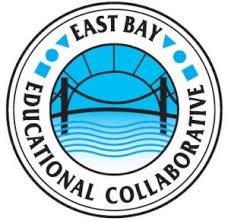
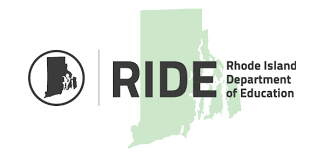
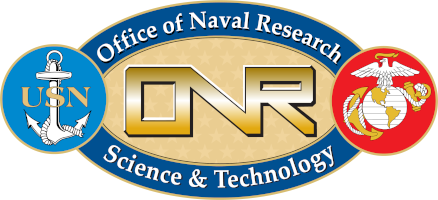

Cybersecurity: A Critical Skill for Today’s World
In our technologically advanced society, cyber security is of critical importance. This curriculum helps students understand how the technology devices we trust can create vulnerabilities to cyber threats across all areas of our lives.
Students will learn about a wide range of risks, including:
- Malware
- Phishing attempts
- Hacking
- Identity theft
These threats can have severe consequences for individuals, organizations, and entire communities. Our curriculum goes a step further by teaching students the principles of Secure by Design.
The Cyber ConnectED Curriculum
Developed with grants from the Office of Naval Research, the Cyber ConnectED curriculum is available in the free Scoutlier platform. When combined with our hands-on kit, it offers students a comprehensive learning experience:
- Explore the Internet of Things (IoT)
- Learn to innovate using IoT
- Develop skills to build safer infrastructure systems in the United States
This practical approach helps students grasp complex cybersecurity concepts and apply them to real-world scenarios.
Who Should Attend
Middle and High School educators passionate about bringing cutting-edge STEM education to their classrooms and enhancing their students’ digital safety skills.
What’s Included in this Fully Funded Training?
- Free robotics/Internet-of-Things kits for your classroom
- Free access to the entire library of Scoutlier EngagED Enrichment Bundles, Including CyberConnectED
- Expert professional development from veteran teachers
- Certificate of Completion
- Membership in an ongoing Project Based Learning PLC on K12Leaders
- Full tuition
Hosted By :
The East Bay Educational Collaborative (EBEC), a nonprofit in Warren, RI, in partnership with Scoutlier of Aecern. Delivered at the CCRI Campus
Don’t miss this opportunity to enhance your teaching toolkit and inspire the next generation of cyber-savvy citizens!
Space is etremely limited. Register today to secure your spot and receive full tuition coverage!
Please please email kathryn.eller@ebecri.org with any questions
-
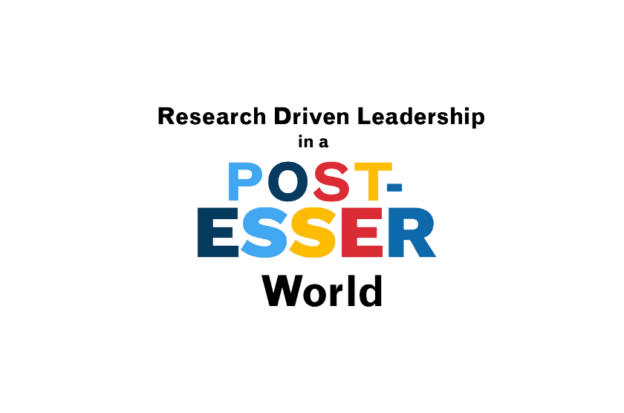
Research Driven Leadership in a Post-ESSER World
As we enter this post-ESSER period, there’s a Peter Drucker quote that becomes particularly relevant for all K-12 leaders. “Management,” he wrote, “is doing things right; leadership is doing the right things.” I don’t often hear Drucker being quoted when it comes to K-12 district leadership, but he should be.
School and district leaders are constantly navigating multiple priorities and interests. The distinction between “doing things right” and “doing the right things” is crucial for leaders at every level, from classroom teachers to superintendents. It’s not enough to “manage” resources—leaders need to understand what’s important, when to focus on it, and how to balance competing priorities between student outcomes, financial resources, and community expectations. This is where conducting and participating in quality research programs becomes an essential leadership tool.
For district leaders, particularly chief business officers and superintendents, research isn’t just a “nice-to-have.” Securing funding for schools through Title I and competitive opportunities like School Improvement Grants (SIG) requires more than just good ideas. These funds are tied to evidence-based strategies, meaning that funded programs must demonstrate they improve student outcomes.

“Any leader, when making decisions about funding or innovation, regardless of the source of funding, it’s essential to act and implement with fidelity. Otherwise you’re just spending money, not leading and not moving forward.”
Bill Bass, Innovation Director at Parkway School District
Under the Every Student Succeeds Act (ESSA), schools receiving Title I funds are mandated to use interventions that have a strong evidence base Brookings. This requirement ensures that taxpayer dollars are spent on programs that show measurable impact and align with best instructional practices. Without research, the ability to secure and maintain funding for new programs can evaporate leaving schools unable to meet the needs of their students. Districts applying for grants must also show detailed plans for evaluating the success of their initiatives, which underscores the critical role ongoing research plays in fiscal sustainability.
Bill Bass, Innovation Director at Parkway School District in Missouri says, “Any leader, when making decisions about funding or innovation, regardless of the source of funding, it’s essential to act and implement with fidelity. Otherwise you’re just spending money, not leading and not moving forward.”
The Benefits of Conducting and Participating in Research
Conducting and participating in quality research offers three immediate benefits:
- Ensures efficacy and ROI for your assumptions and investments.
- Identifies the unique needs of your learning community, including both educators and students.
- Demonstrates leadership’s commitment to responsiveness and informed decision-making.
The Role of Reflection in Research and Funding
This connection between research and funding highlights the importance of ongoing evaluation. By collecting data and assessing the effectiveness of new programs, school leaders can make informed financial decisions, whether the programs are grant-funded or not. If a program is successful, districts can reinvest to continue the initiative or even expand its reach. If unsuccessful, funds can be redirected to better training or more promising solutions to achieve the identified goals. This cycle of research, reflection, and reinvestment is essential for balancing innovation with financial accountability.
It’s also a shared responsibility. A school’s first job is serving its students, and the process of reflection takes time and careful management. This creates an interdependent relationship between schools, academics, and solution providers. Schools contribute real-world needs, academics provide authoritative frameworks for analysis, and solution providers respond with products based on these validated market needs.
Solution providers should view themselves as vested partners in this process. Given the pressures that districts face, offerings should either include or integrate feedback loops that make it easier for schools to assess the impact they’re having with the tools they adopt.
For instance, Promethean, a manufacturer of interactive whiteboards, has a dedicated research department that regularly engages with district partners and academic institutions to conduct and provide rigorous analysis of the impact they are supporting in the classroom.
“Partnering with universities and research organizations like Teachers College, Columbia University brings rigor to the process that ensures we gain real insights from the data—insights that we can share directly with the districts themselves.”
Anna Hughes, Director of User Research at Promethean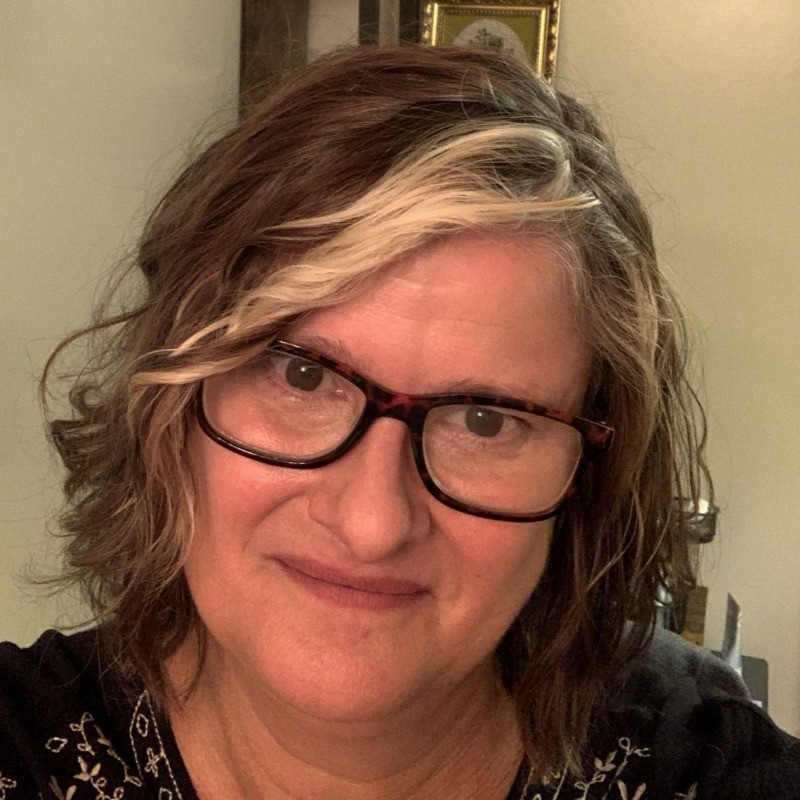
Anna Hughes, Director of User Research at Promethean, explains the value of these partnerships, “Our focus is always on listening to the teachers, administrators, and technology staff involved in teaching and learning around the world. We’re constantly seeking evidence of impact, whether to improve our existing solutions or develop new ones. The best moments come when we recognize a challenge and see user feedback directly shaping product development.”
“We partner with universities and research organizations like Teachers College, Columbia University whenever possible. The rigor and methods they bring to the process ensure that we’re gaining real insights from the data—insights that we can share directly with the districts themselves.”
Using Research to Redirect Resources
Sometimes vendors may feel concerned about scrutiny, but an important part of any district/vendor partnership is the trust that both parties want each other to be successful. Making it easy for school leaders to evaluate success and/or identify gaps creates an opportunity for redirection—for instance, investing in additional professional development.
The history of interactive whiteboards offers a useful example. When IWBs entered the market more than 15 years ago, they were met with a rush of enthusiasm and quick adoption. Community support was overwhelmingly positive, and purchases soared. But soon, practical issues—installation, professional development, and maintenance—began to temper that excitement. As a result, classroom adoption declined, with many districts unsure whether the investment had paid off.
However, a more recent meta-analysis of 23 studies found that IWBs, when combined with well-structured, independent learning approaches, can have a positive impact on cognitive outcomes SpringerOpen.

“When you partner with an organization like the NSF, the Office of Naval Research, or MIT Critical Data you’re becoming part of an amazingly rigorous feedback loop. ”
Dr. Luk Hendrik, CEO of Aecern.orgResearch, though it takes time, is essential for validating the effectiveness of new tools and strategies. Without it, school leaders are left guessing which innovations are worth the investment, risking missed opportunities or wasted resources.
Some new solutions do evolve from research-driven grants. In fact, that’s a driving factor behind many grants from organizations like the National Science Foundation and the Office of Naval Research.
“We make it a priority to participate in quality grant opportunities,” Says Dr. Luk Hendrik’s of Scoutlier, a relatively new scaffolding and enrichment platform. “When you partner with an organization like the NSF, the Office of Naval Research, or MIT Critical Data you’re becoming part of an amazingly rigorous feedback loop. By the time your offerings are ready for release they’ve already been through prolonged field tests with educators and have been independently evaluated by some of the national top educational researchers. Yes, it’s a lot more work up front, but everyone ends up benefiting from the process.”
The Hawthorne Effect and Innovation
It’s worth recalling the Hawthorne Effect, a classic example of the value of experimentation and observation. In the 1920s and 1930s, researchers at Western Electric’s Hawthorne Works experimented with changing the brightness of lighting to observe its impact on worker productivity. They found something unexpected: whether the lights were brightened or dimmed, productivity improved. Why? The workers were responding to the attention they received during the study, not the lighting changes themselves Home | American Institutes for Research.
For educational leaders, the key takeaway is that experimentation can lead to positive outcomes even before the results are rigorously studied. Importantly, this isn’t about treating staff or students as “subjects” in experiments. Instead, it’s about involving educators as collaborators in the innovation process. When teachers are supported and involved, they’re more likely to engage with new tools and teaching methods in ways that drive desired outcomes.
Professional Development and Ongoing Support
As seen with the example of interactive whiteboards, it’s critical that educators are equipped to integrate new tools into their teaching practices. While initial professional development is important, research shows that ongoing support is what drives long-term success SpringerOpen.
Schools didn’t struggle with whiteboard adoption because the technology was ineffective, but because teachers needed support to use the boards in ways that improved learning outcomes. Districts that invest not just in initial training but in ongoing professional development see better engagement and outcomes.
Professional learning communities (PLCs) are equally critical. These communities provide spaces where educators can collaborate, share experiences, troubleshoot challenges, and learn from one another. Many companies, like Apple and Microsoft, offer their own communities, but general networks like K12Leaders provide platforms where educators can stay connected with peers, trainers, and presenters long after an initial conference or training session. These networks foster a continuous flow of new ideas and encouragement, helping educators navigate the practical challenges of implementing innovative strategies in the classroom.
In the end, it’s the ongoing learning—both through structured professional development and peer networking—that sustains innovation. Teachers can’t be expected to learn a new tool with a single training event; they need continuous opportunities to adapt, share insights, and evolve their practice.
Bass adds, “Leaders need to “create space” for teachers to be able to try new practices and tools while recognizing that some things will work better than others. Just like with students, teachers learn through experimentation and must have the opportunity to work through challenges and successes. This takes time, energy, and collaboration which are all critical elements of the ongoing support when adopting or implementing new solutions.”
Leading with Research
How do we, as a district, contribute to research on topics we care about? This is an essential question for today’s educational leaders. Beyond using research to guide decisions, district leaders have a responsibility to contribute to the research that shapes the future of education. In an era where technology, tools, and methodologies are evolving rapidly, leaders must ensure their communities’ voices are represented in broader conversations about what works in education.
District leaders who engage in research contribute to the collective knowledge base, not just for their own benefit but for the benefit of students and educators everywhere. Whether it’s partnering with vendors conducting efficacy studies or collaborating with universities, districts have an opportunity to drive the innovations that will shape the next generation of learning tools.
Moreover, participation in research allows districts to tailor solutions to their specific needs, rather than waiting for external solutions to be presented. Leadership in this context means helping to discover what works best within the unique context of a community, ensuring that the tools and strategies developed reflect the diverse realities of today’s schools.
Research, Reflect, Reinvest, or Redirect

“Research and reflection helps us be strategic, not just reactive, with our resources.”
Leo Brehm, Assistant Superintendent for Finance, Business, and Technology at Dighton-Rehoboth School DistrictLeo Brehm, Assistant Superintendent for Finance, Business, and Technology at Dighton-Rehoboth in Massachusetts says, “Managing a budget requires more than just oversight; it really requires thoughtful reflection and the ability to make informed decisions. By reallocating funds to areas where we know, through research and careful evaluation, they’ll have the biggest impact, we make sure that each dollar is working to support student success. Research and reflection helps us be strategic, not just reactive, with our resources.”
The challenge for today’s educational leaders isn’t about choosing between innovation and a balanced budget- it’s about finding the balance that enables both. By establishing systems for ongoing evaluation, school leaders can reflect on the impact of their investments and make informed decisions about whether to reinvest in successful programs or redirect resources toward more effective solutions.
As Drucker’s wisdom suggests, leadership is about “doing the right things.” That means ensuring that every decision, whether grounded in research or driven by experimentation, aligns with the ultimate goal of improving student outcomes. With a careful balance of strategic risk-taking, data-driven evaluation, and fiscal responsibility, K-12 leaders can ensure their districts remain innovative, adaptable, and prepared for whatever the post-ESSER future holds.
Calls to Action
- Join a research study like Teachers College, Columbia University (IRB 24-127).
- Get involved with a research oriented PLC like Efficacy & Research in K12 to learn from your peers.
- Stay up-to-date on grants funded by research oriented organizations like the National Science Foundation and Naval Post Graduate School to understand what’s coming down the road.
Key Takeaways
- Fiscally responsible leadership requires balance : Effective leadership in K-12 education is about making informed decisions that balance student outcomes, financial resources, and community expectations.
- Research is essential for securing funding : Districts need evidence-based strategies to secure Title funding and other competitive grants like School Improvement Grants (SIG), ensuring that funded programs lead to measurable improvements in student outcomes.
- Ongoing reflection drives financial sustainability : School leaders must continuously evaluate the success of programs and make data-driven decisions to reinvest in successful initiatives or redirect funds to more promising solutions.
- Collaboration is key : Schools, academics, and solution providers must work together to ensure that research reflects real-world needs and results in effective solutions.
- Professional development and peer support sustain innovation : Initial training is important, but ongoing professional development and learning communities (PLCs) are critical for ensuring that educators continue to improve their use of new tools and strategies over time.
- Experimentation with purpose : The Hawthorne Effect demonstrates that experimentation can lead to positive outcomes, especially when staff are involved as collaborators in the innovation process.
- Contributing to research strengthens leadership : By engaging in primary research, districts not only benefit their own communities but also contribute to the collective knowledge base, influencing broader educational trends.
- Long-term success requires flexibility : Leaders must be willing to reflect, reinvest, or redirect resources based on research and ongoing evaluation to ensure sustained innovation and financial responsibility.
Essential Leadership Questions:
- How are we ensuring that our decisions about funding and innovation are based on evidence and research?
- Are we participating in or contributing to research that will directly benefit our district and shape the future of education?
- How can we better collaborate with academics and solution providers to align our needs with research-backed strategies?
- Are we providing enough ongoing professional development and support to ensure that our educators can effectively use the tools and strategies we implement?
- How do we maintain the balance between fiscal responsibility and long-term financial sustainability?
- What feedback loops are in place to help us assess whether the tools and solutions we adopt are having the desired impact?
- How can we encourage a “growth mindset” and culture of innovation, where staff are active collaborators in suggesting, testing and refining new ideas?
- Are we flexible enough in our approach to reinvest in successful initiatives or redirect resources when programs aren’t delivering expected results?
- How do we create opportunities for educators to learn from each other and take advantage of opportunities to experiment?
-
Opportunity- Discover the Impact of Interactive Whiteboards on Engagement
Teachers College, Columbia University invites you to participate in a research study (IRB approval (ID: 24-127)) on interactive whiteboards’ role in student engagement. By joining, you’ll gain early insights into technology’s effect in the classroom, helping your district make data-driven decisions for future tech investments.
Be Part of the Research
- Minimal Disruption : One classroom observation, plus a quick, anonymous survey.
- Actionable Insights : Anonymized findings specific to your district, shared exclusively with you.
- Future-Ready : Help shape research that informs technology funding and planning decisions.
Sign Up Now to Learn More!
[wpforms id=”62179″ title=”false”]
Why Participate?
- Inform Your Technology Investments : Gain early insights into how interactive whiteboards affect engagement, allowing you to allocate resources strategically.
- Minimal Classroom Disruption : The study involves a single-day classroom observation and a brief, anonymous survey for participating teachers and students.
- Valuable District Insights : Receive anonymized, trend-level data that can inform instructional planning and align with district improvement goals.
How It Works:
- This study is coordinated between Teachers College, Columbia University, Promethean, and K12Leaders.
- One Day of Observation : We’ll observe standard classroom activities with no changes required.
- Short Surveys & Interview : A quick survey follows the observation, alongside a brief teacher interview to capture essential feedback.
- Receive Anonymized Results : All findings are aggregated and shared with your district, supporting evidence-based decision-making for future technology adoption.
If you’re interested in advancing research-driven leadership in your district, respond here to receive more details or schedule a conversation to explore this opportunity.
